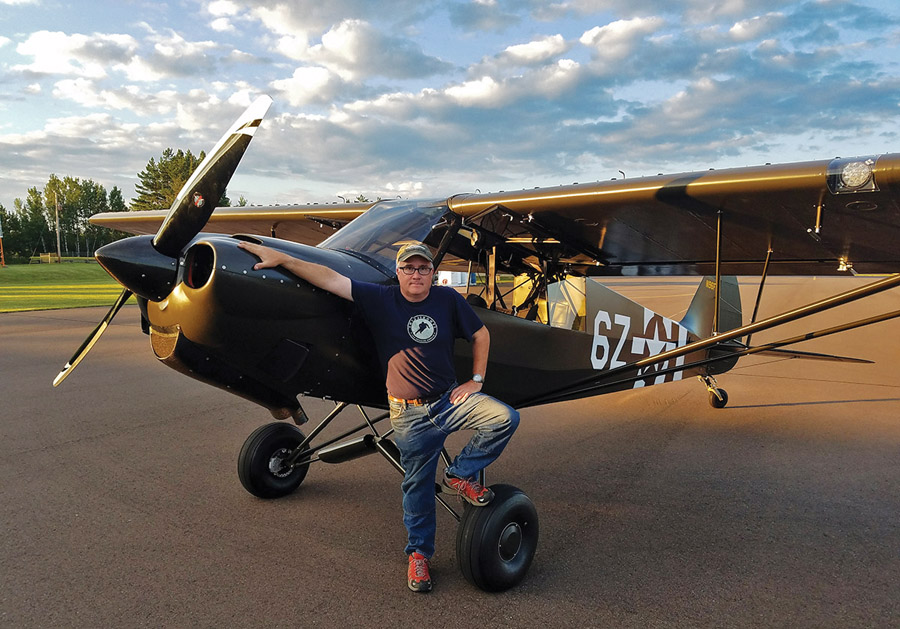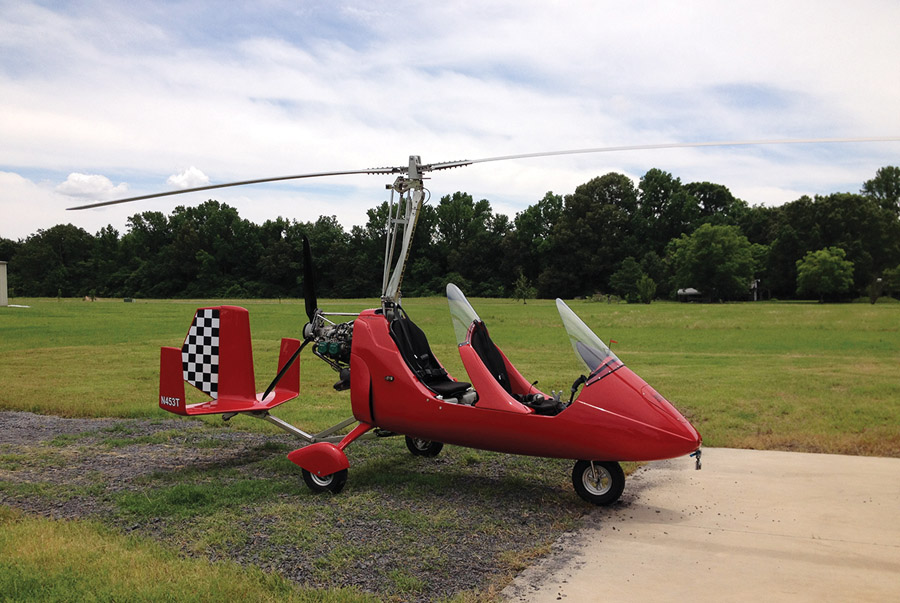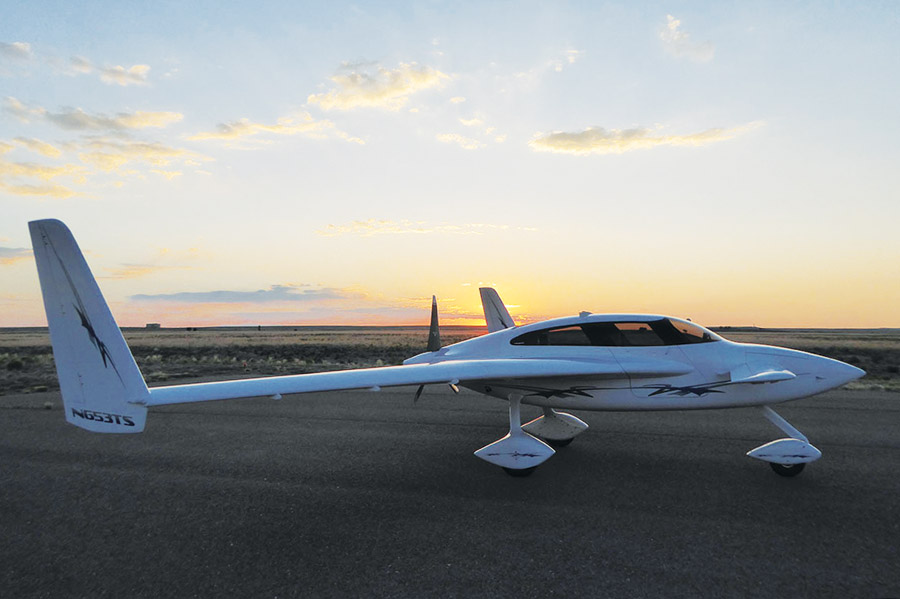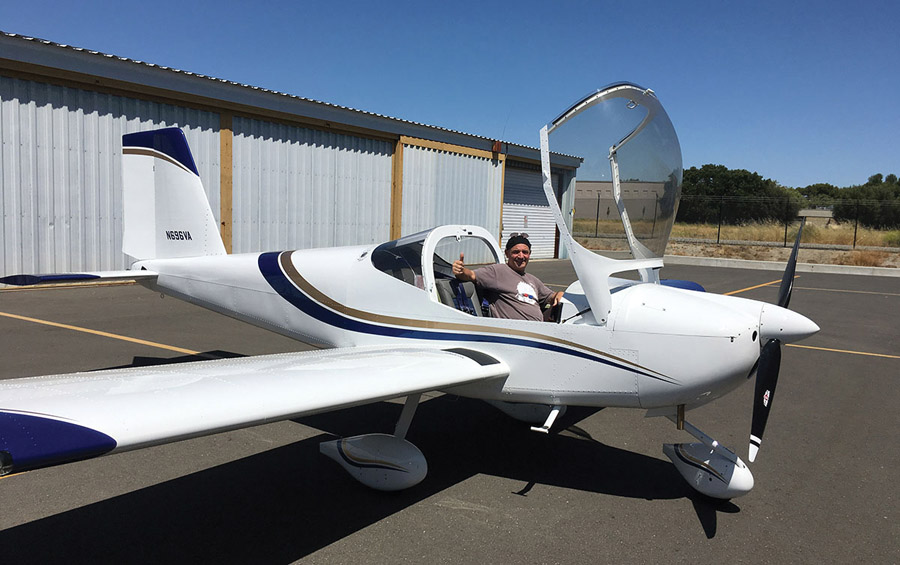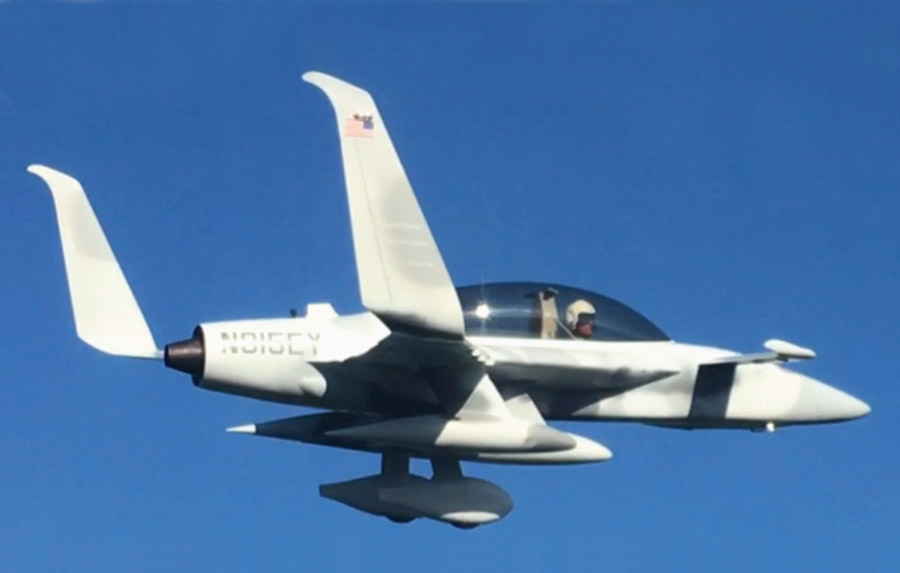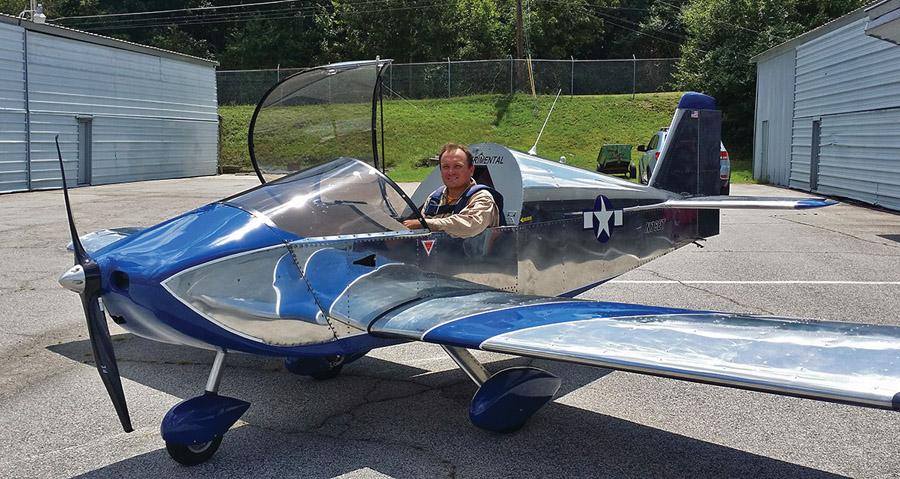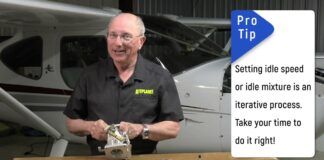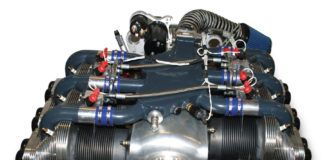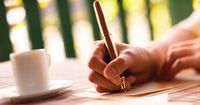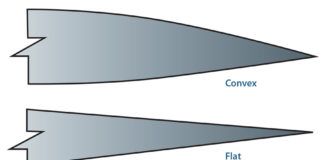Jake Hayes’ CubCrafters EX
My CubCrafters EX, N-96FV, was finished July 30, 2016. My 87-year-old dad was the first passenger after my 40-hour fly-off. He flew chase in his Cherokee for the maiden flight.
The plane is painted in D-Day colors for my C-130 unit’s 70th anniversary. The 96th Airlift Squadron “Flying Vikings” were the 96th Troop Carrier Squadron during WW-II. The squadron’s designation was 6Z.
Saint Paul, Minnesota
[email protected]
Bill Hogue’s AutoGyro MTO Sport
I had been researching gyroplane technology for the past 20 years and knew that the modern gyroplane is an amazing aircraft. After scoring a ride in an MTO Sport in July 2015, I knew I had to have one. I was fortunate that a dealer and flight training in Searcy, Arkansas, was only an hour away by car.
I picked up my AutoGyro MTO Sport kit in December 2015, and building was complete by March 2016. The airworthiness certificate was issued, and the first flight was on May 23, 2016. After Phase I testing was complete in February of 2017, I flew my gyro home to Lonoke, Arkansas.
The MTO Sport is a well designed, solid, safe-flying aircraft—AutoGyro makes an awesome kit. It’s incredibly stable in windy conditions and can easily handle a crosswind that would make the fixed-wing guys stay at home.
little rock, arkansas
[email protected]
Mark Sturm’s Velocity
Velocity 173 Fixed Gear Elite, N653TS, has taken just shy of 20 years to morph from several boxes of fiberglass parts to the plane you see here. Back in June 1997, I wanted something to keep me active in aviation besides the typical rental Cessnas. I was looking for a well-appointed plane that would be affordable and comfortable for the whole family, yet still turn a few heads when we taxied up to the pumps somewhere. After a year of research, visiting several airshows and taking a trip to the factory, I decided to build a Velocity. I originally thought it would take five years, but finding the right balance of family, job, other hobbies, and plane building can be a real challenge.
Obviously, a lot of technologies have changed in the past 20 years, so I tried to hold off buying the big-ticket items until absolutely necessary. The airplane is equipped with a 200-hp Lycoming IO-360, mated to a 3-blade MT constant-speed prop. The guys at Aerotronics did a great job with the Dynon SkyView/Garmin VFR panel. A local friend, Jay Safro, did the heated seats and interior upholstery with memory foam and leather to my wife’s specifications. His son Race had painted a couple show cars, and he wanted to put a plane on his rsum. We spent four months prepping, and he did a great job shooting the Sherwin Williams Jet Glow. Some nice vinyl accents bring it all together.
So far, the plane performs as advertised. I continue to expand the envelope and tweak the inevitable glitches that come up. What a great journey it’s been. I’ve met some great folks along the way, and I couldn’t have done it in even 20 years without the support of the Velocity factory, our computer forum, my neighbor, “Randy the Toolman,” and, of course, the steadfast support from my family. I look forward to meeting many new friends as we travel and hopefully visit all of the lower 48 states. We’ll see you out there!
Albuquerque, New Mexico
[email protected]
Jim Agua’s RV-12
N696VA is an RV-12 built as an E/A-B. The plane took four and a half years to complete, and I logged 1900 hours in the build log. I’ve only flown it a couple of hours now, but I just love this little plane. It’s quick and nimble, and performs very well.
I painted the plane prior to final assembly because I knew that once I had it flying, I wouldn’t be able to part with it, and I didn’t want to take it apart again. (I still take it apart quite a bit.)
The plane flies hands off straight and level and just jumps off the runway. The SkyView is a pretty awesome piece of hardware/software, and I’m learning more about it every day.
Thanks to my wife Misa for all her support with this project.
Pittsburg, California
[email protected]
Lance Hooley’s Jet Eze
It all started with a visit with Rutan guru Robert Harris of what is now Jet Guys in Covington, Tennessee. I wanted to build a Long-EZ, but Robert suggested using current information and technology, instead of 1977 when the Long-EZ plans came out. Originally I wanted an IO-360—but then the decision was made to go jet. It has a GE-T58-8 engine modified to pure jet. It puts out about 840 pounds of thrust. For you guys with the spinny things, it’s about 600 hp. It pushes it along doing 190 knots true in the climb at 2500 fpm all the way up to 17,000 feet. Fuel burn drops to 31 gallons per hour doing 250 knots true. It carries 24 gallons in the two inboard pods and baggage in the outboards. All total, it can carry 160 gallons, enough to go 4.5 hours with a reserve. It comes off at 80 knots when heavy and over the fence at 80 knots on all landings. Many thanks to all of the incredibly helpful vendors and individuals who contributed to this project.
Kissimmee, Florida
[email protected]
David Jacob Heino’s Sonex
I completed Sonex #1072 on August 18, 2014 and made the first flight the same day from Charlie Brown/Fulton County Airport in Atlanta, Georgia. The airplane now has over 150 hours on it and has made several trips from Atlanta to South Florida, the Carolinas, and to Tower, Minnesota, which is just south of the Canadian border. Typical cruise is just under 120 knots, and it’s a decent cross-country traveler for me.
The aircraft is powered by a normally aspirated AeroVee rated at 80 hp with an AeroInjector. The panel is equipped for day and night VFR and consists of an MGL Velocity engine monitoring system, an iLevil AW AHRS and ADS-B In, an Infinity military-style joystick grip, a Garmin GTR 200 Com, and a Garmin GTX 327 Transponder. I used both the EAA Technical Counselor and EAA Flight Advisor programs, as well as the Sonex T-Flight transition training program to ensure a successful build and first flight.
Atlanta, Georgia
[email protected]
BUILDERS SHARE THEIR SUCCESSES
 Submissions to “Completions” should include a description (a few paragraphs only—250 words maximum) of the project and the finished aircraft. Also include a good color photograph of the aircraft. Please include a daytime phone number where we can contact you if necessary. Also indicate whether we may publish your address in case other builders would like to contact you. Send submissions to [email protected] with a subject line of “Completions.” Photos must be high-resolution—300 dpi at a 3 x 5 print size is the minimum requirement.
Submissions to “Completions” should include a description (a few paragraphs only—250 words maximum) of the project and the finished aircraft. Also include a good color photograph of the aircraft. Please include a daytime phone number where we can contact you if necessary. Also indicate whether we may publish your address in case other builders would like to contact you. Send submissions to [email protected] with a subject line of “Completions.” Photos must be high-resolution—300 dpi at a 3 x 5 print size is the minimum requirement.

